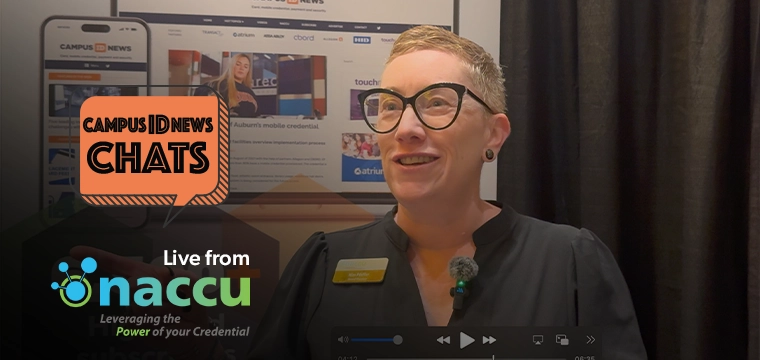Don’t think students eat a lot? Implement an off-campus debit card program which allows you to track their purchases, and you’ll quickly see that they do. At least that’s what Ohio State University has discovered. But the university’s first step was getting merchants signed up, which was easier said then done.
OSU would have liked merchant involvement in its campus card program from Day One, “but they were a bit apprehensive about our program,” says Valerie Shafer, OSU’s director of information systems and services.
“Ohio State’s strategy was to give students as many choices as possible as to where they could make purchases,” she says. “The idea was very popular with the students and parents and allowed our program to grow very rapidly.”
When off-campus merchants did take the plunge, six months after the first card was issued, OSU started with about six merchants, including two bookstores, a convenience store and a Wendy’s.
It has grown steadily since then, from about $2 million in sales in 1995-96 to almost $9 million in 2001-02. Today’s figures equate to about 15,000 off-campus transactions a day, depending, of course, on the time of year.
About 150 merchants, on-site and off, are on the BuckID program, but that doesn’t include the vending and laundry machines that also accept the card. Off-campus merchants dominate the program. About three-fourths don’t have campus ties, said Ms. Shafer.
OSU does very little off-campus promotion of the BuckID, although marketing students will, from time to time, call on merchants as part of a class assignment.
“For the most part, new merchants contact us either by phone or through our web site (www.buckid.com), which contains complete information for merchants, including an online application,” says Ms. Shafer.
“Once the merchant application is received, a decision is made regarding the appropriateness of the business. We do not accept bars, but do accept restaurants that serve alcohol,” she adds.
There is a $400 one time start-up fee for each merchant. That includes installation and training. Merchants also have to purchase their own equipment, a Tranz330 or Tranz380X2 Verifone reader. Once the equipment is installed, explains Ms. Shafer, a technician from OSU (it may even be a student) visits the store and downloads the software to the reader.
“We also drop off in-store marketing materials, such as posters and point-of-purchase stickers,” she adds.
She says the BuckID staff handles all troubleshooting, “but not much is required. We do rely on a 24-hour Student Affairs Service Desk to take calls after hours and on weekends. Many times, problems can be handled remotely.”
One of the biggest issues for OSU was setting a realistic transaction fee. Transaction fees vary from 3% (for bookstores), to 4% for all other sales. If a merchant wants to be reimbursed weekly, the transaction fee climbs to 5%, she says. Otherwise, merchants are paid monthly based on invoices they submit to OSU, according to the BuckID web site.
Merchant fees for OSU have grown from less than $200,000 in 1995-96 to nearly $350,000 last year.
When the debit program first got started, the biggest sales category was books. But for the past two years, food has topped the sales category.
The Transz330 can handle just the BuckID, but the 380 can also accept MasterCard and Visa, says Ms. Shafer. “Off campus merchants are very pleased with the program.”
One of the major advantages of the university-run debit card program is the amount of cash deposits generated from students and parents.
OSU has seen its BuckID deposits increase from a little over $6 million in 1995-96 to more than $13 million last year. More than 40,000 students (and faculty and staff) use the BuckID.
The technology behind OSU’s off-campus merchant program and the ID card itself is provided by Blackboard Inc. The campus has been a user of the system since the mid-1990s.
Web-based revalue of cards is made possible via technology from JSA Technologies. Students, parents, or others can visit the BuckID web site to add money to a card account–simply by entering the student’s social security number and the MasterCard or Visa number to be charged. A $0.50 convenience fee is added to help offset costs incurred by the BuckID program for the transaction.
By all accounts, the Ohio State card program is a card worth emulating. Solid support from the institution, the students, the merchant community, and Blackboard have forged an extremely strong off-campus program.




